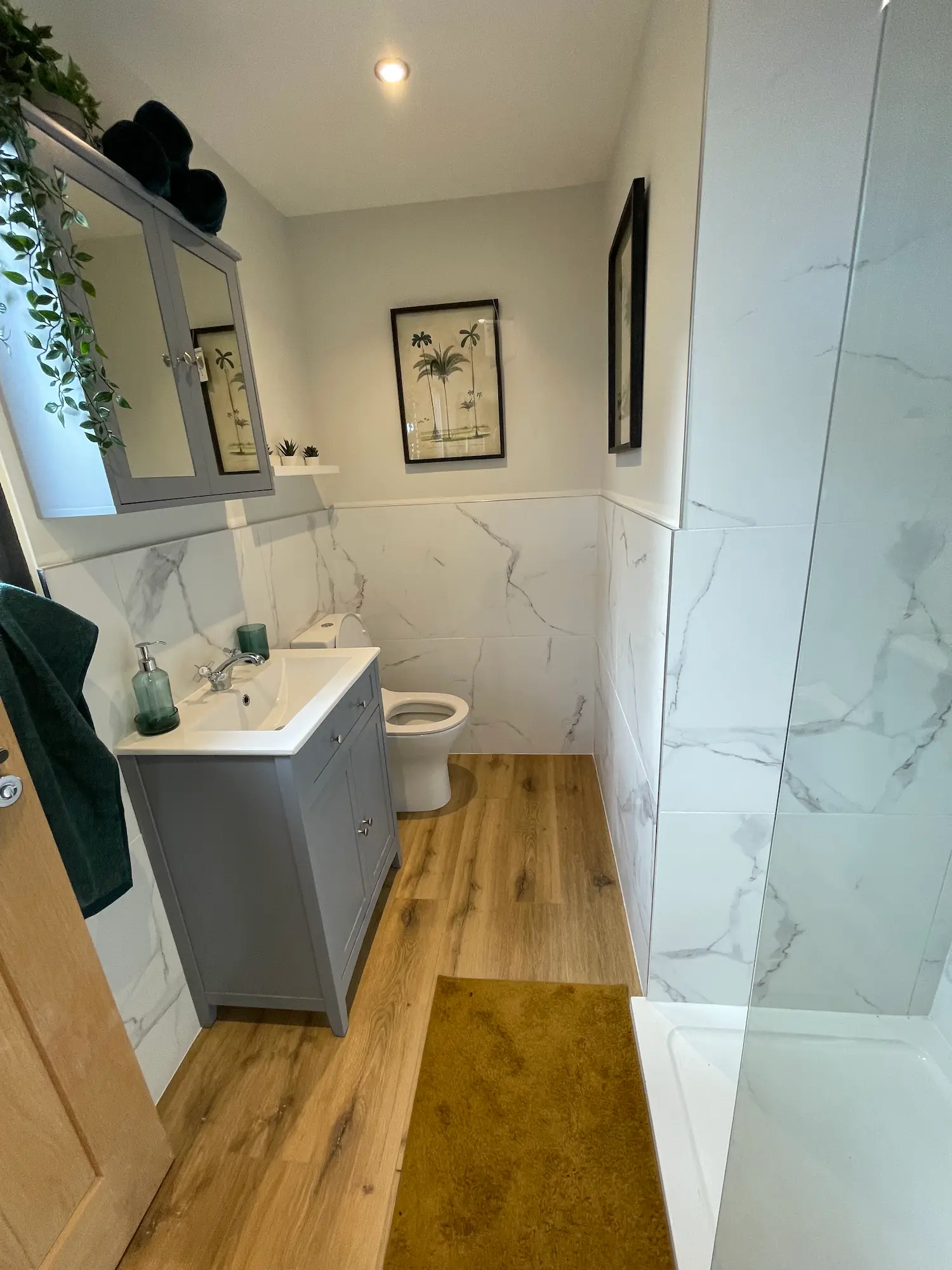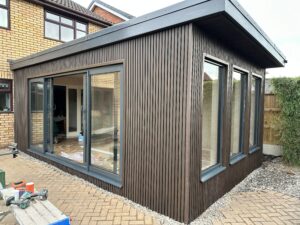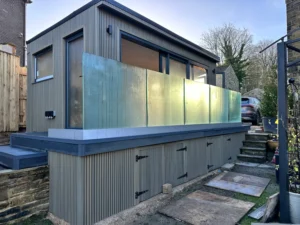By Sarah Barlow, SIPS Garden Room Specialist
Dreaming of extending your living space with a multifunctional garden room? But what about the essential amenities? Can you transform your garden room into a practical haven with a bathroom or kitchen? The answer is yes, but with some important considerations.
Planning Your Dream Space:
Before embarking on this exciting project, ensure your garden room boasts proper weatherproofing and a watertight roof. These are fundamental for any utility installation, whether it’s electricity or water. Remember, even a charming wooden shed can be transformed into a functional space, but proper protection from the elements is crucial.
Bringing Power to Your Garden Room:
Safety comes first! Always hire a qualified electrician registered with a recognized body like NICEIC, Napit, or Elecsa for electrical installations. Discussing your plans beforehand helps them provide the appropriate number of outlets and light fixtures with the correct cabling.
Key considerations:
- Spare circuit: Make sure your fuse board has a spare circuit to accommodate the new installation. If not, consider upgrading your fuseboard to meet current regulations.
- Residual-current device (RCD): This vital safety feature acts as a “better safe than sorry” switch, automatically interrupting the power flow in case of an issue.
- Isolator: Installing an isolator allows you to isolate the external supply from the rest of your house’s electrical system in case of problems in the garden room.
- Cable routing: The chosen route, either overhead or underground (in a steel-wire armoured cable), depends on the distance and your preference. Remember, underground cables need to be buried deeper than 300mm to avoid accidental damage while gardening.
Cost estimations:
Expect to spend at least £600 for an installation, which typically takes around two days to complete. This includes the electrical installation test certificate and registration of the works.
Adding the Convenience of Water:
Envisioning a refreshing shower or the ease of a sink in your garden room? Here’s what to expect.
Installing cold water:
- Dual pipe system: One pipe brings fresh water into the building, and the other removes waste (grey) water.
- Connecting to the mains: Your plumber will locate a suitable connection point in your house, like the kitchen tap, to source cold water.
- New pipework: The pipes need to be buried at least 750mm underground. This can be done under floorboards or, for longer distances, through a trench dug by a builder.
- Wastewater removal: Options include connecting to an existing soil drain point or using a pump station to move water to an outside drain.
Hot water considerations:
- Small water heaters: These provide limited hot water (around 7-10 litres) under a sink and don’t require strict regulations like boilers.
- Appliance-specific hot water: Appliances like washing machines and dishwashers generate their own hot water.
Creating a Compact Kitchenette:
With careful planning, you can create a functional kitchenette in your garden room. Here are some tips:
- Compact appliances: Opt for compact appliances like a microwave, mini fridge, or single hotplate to maximize space.
- Multi-functional furniture: Look for furniture that serves multiple purposes, such as a breakfast bar that doubles as a workspace or a cabinet with a hidden pull-out sink.
- Smart storage solutions: Utilise vertical space with wall-mounted shelves and cabinets, and consider under-counter storage solutions to maximize space.
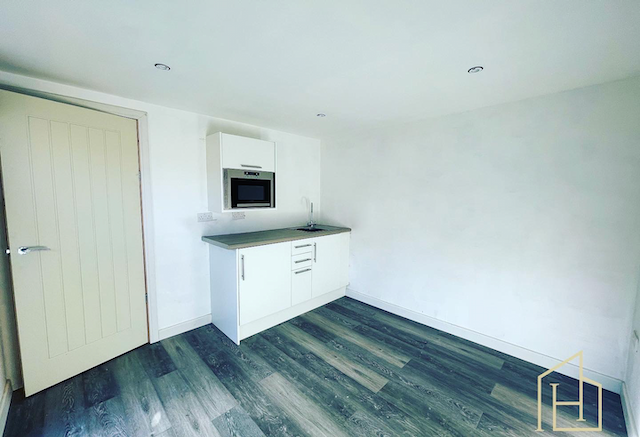
Adding a bathroom:
Dreaming of turning your garden room into a truly self-contained haven? Adding a full bathroom complete with a shower, toilet, and sink is certainly possible. However, it requires careful planning and the expertise of qualified professionals.
Shower Bliss:
- Electric shower and cubicle: Installing an electric shower within a dedicated cubicle provides a convenient showering experience without having to install a boiler. Mira electric showers use a built-in element to heat cold water from your mains supply.
Saniflo Toilet and Efficient Waste Removal:
- Macerator technology: Consider incorporating a Saniflo toilet system, which utilizes a macerator to efficiently grind and pump waste upwards and away through a smaller diameter pipe. This eliminates the need for a traditional gravity-fed drainage system, making it ideal for garden rooms where installing traditional plumbing might be challenging.
Benefits of Saniflo:
- Flexibility: Saniflo systems offer greater flexibility in placement, allowing you to locate your bathroom almost anywhere in your garden room, regardless of its proximity to existing drainage.
- Space-saving: The smaller pipe diameter required by Saniflo systems enables you to maximize space within your garden room.
- Cost-effective: While installing a Saniflo system may initially appear more expensive, its flexibility can save costs in the long run by eliminating the need for extensive trench digging or alterations to connect to existing drainage.
Remember: Saniflo systems require an electrical connection for the macerator to function. Discuss the specific model and its needs with your chosen plumber.
Additional Considerations:
- Ventilation: Installing proper ventilation is crucial for any bathroom, especially one containing a shower, to prevent moisture buildup and potential mould growth.
- Hot water: As mentioned previously, an electric shower provides hot water for showering; however, you will need to consider additional options for hot water at the sink, like a small electric water heater or a point-of-use water heater specifically designed for the basin.
By carefully planning and working with qualified professionals, you can successfully incorporate a full bathroom with the convenience of a shower, Saniflo toilet, and sink, transforming your garden room into a truly versatile and enjoyable space.
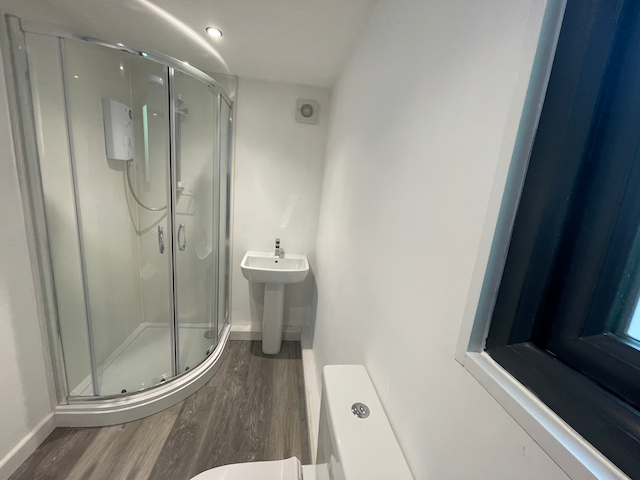
Cost estimations:
Installing a cold-water source and plumbing for a sink or appliance costs around £500+ for an attached garden room and can take up to three days.
Planning Permission: A Necessary Step?
If you plan to significantly alter the functionality of your garden room, especially by installing a bathroom or fixed plumbing, obtaining planning permission might be required. While incidental uses like hobbies likely don’t require permission, activities like showering or cooking might. It’s recommended to discuss your plans with your chosen installer, who can guide you on whether to contact your local planning department and ensure your project adheres to building regulations. Find out more here
At Heritage Garden Studios we invest in the expertise of qualified professionals for both electrical and plumbing installations to ensuring that the customer receives the correct certifications.
